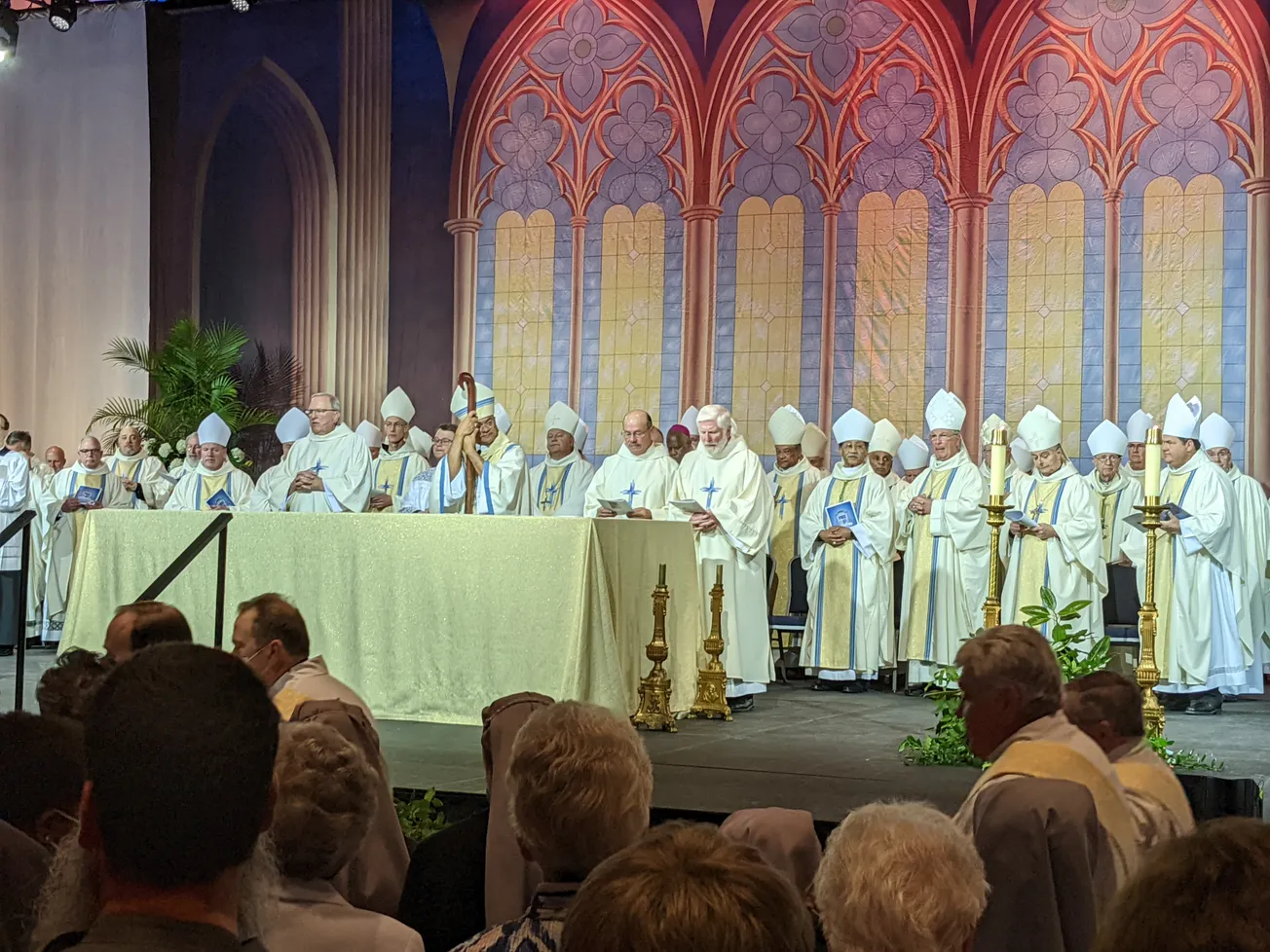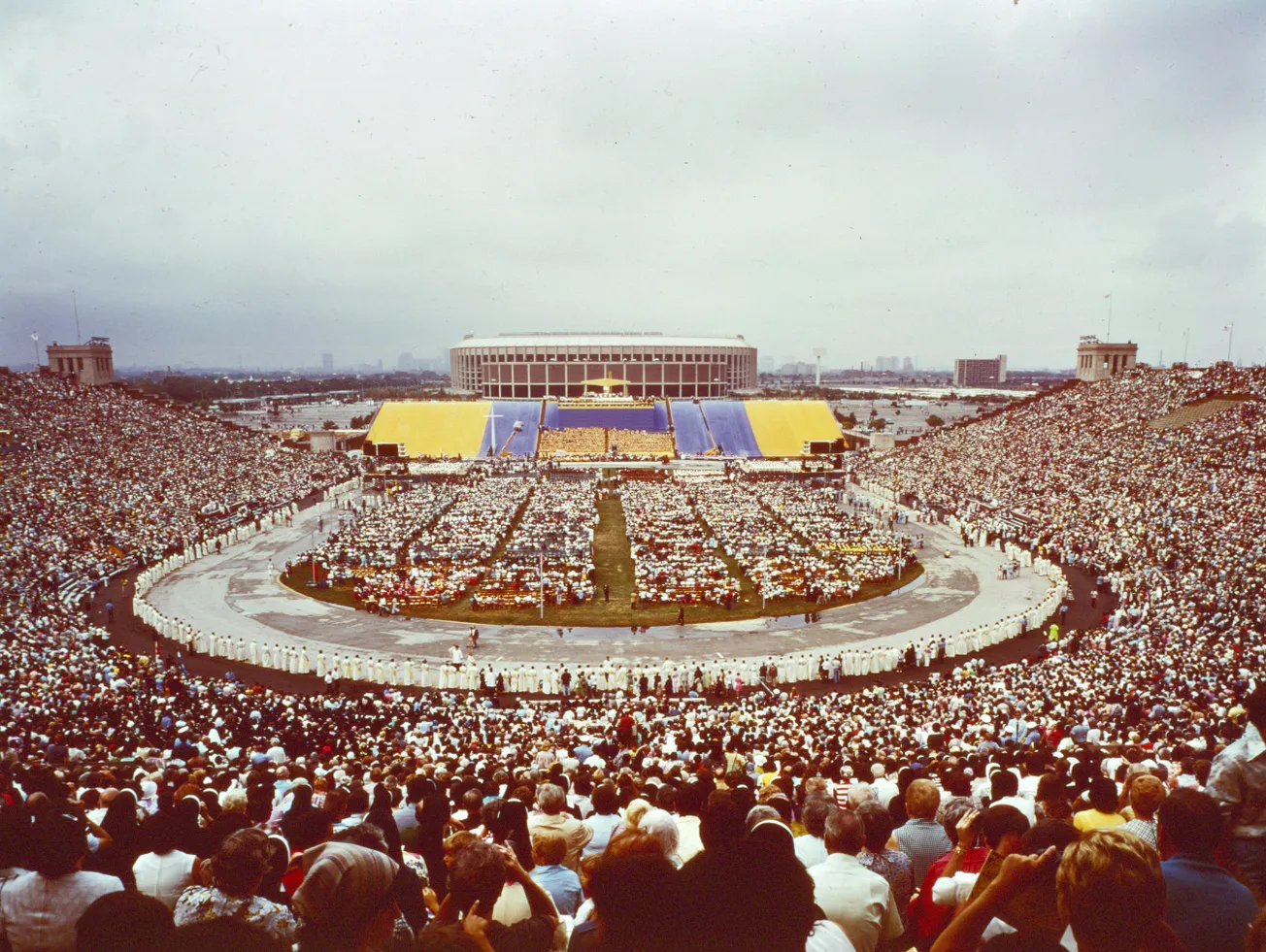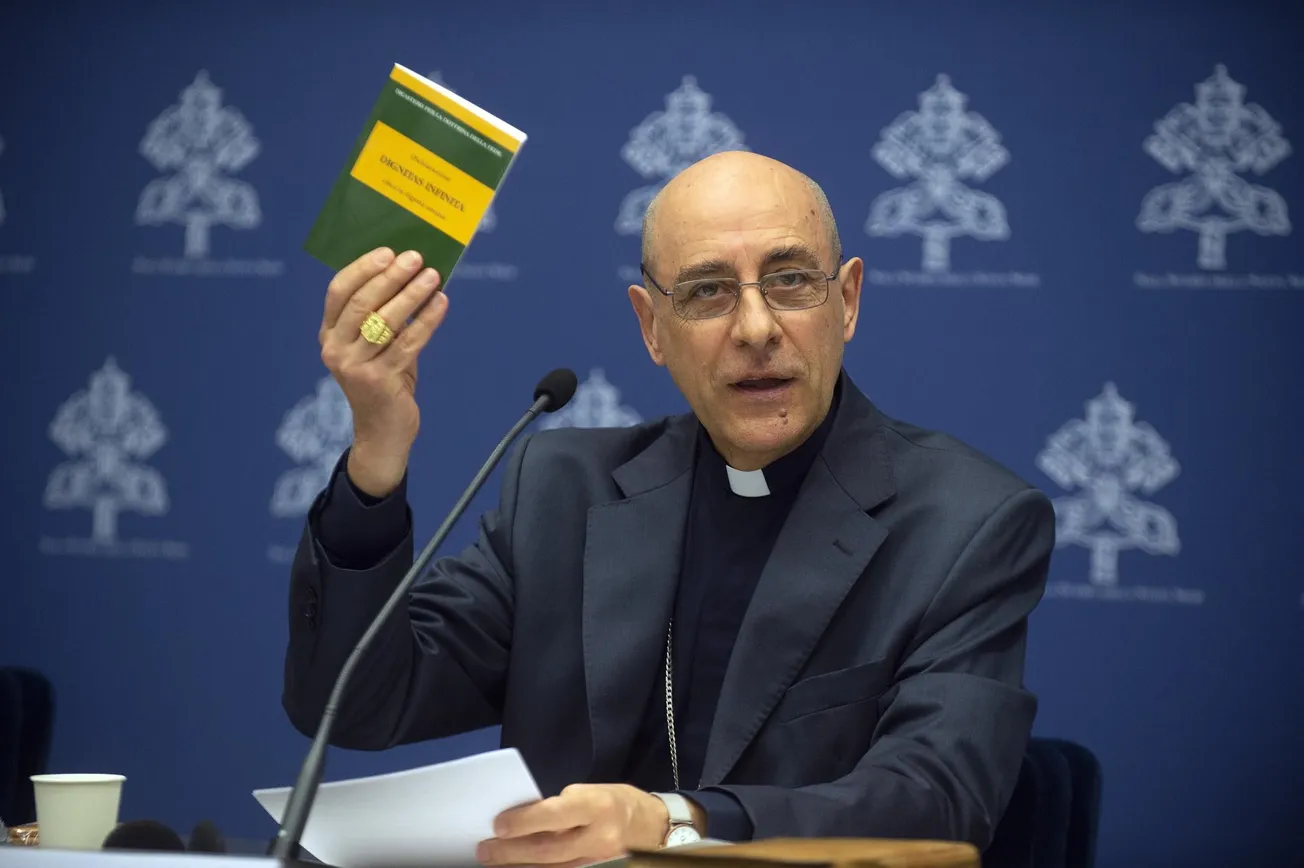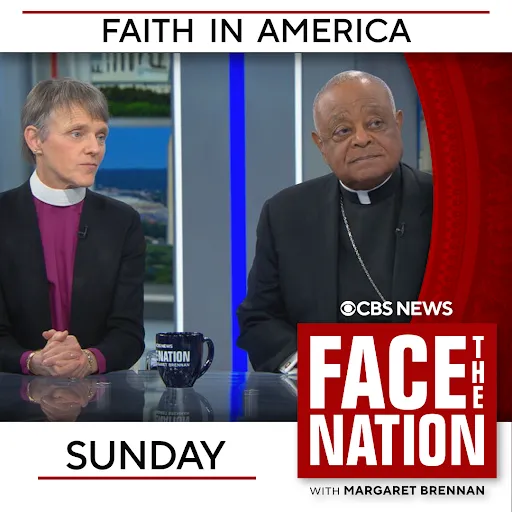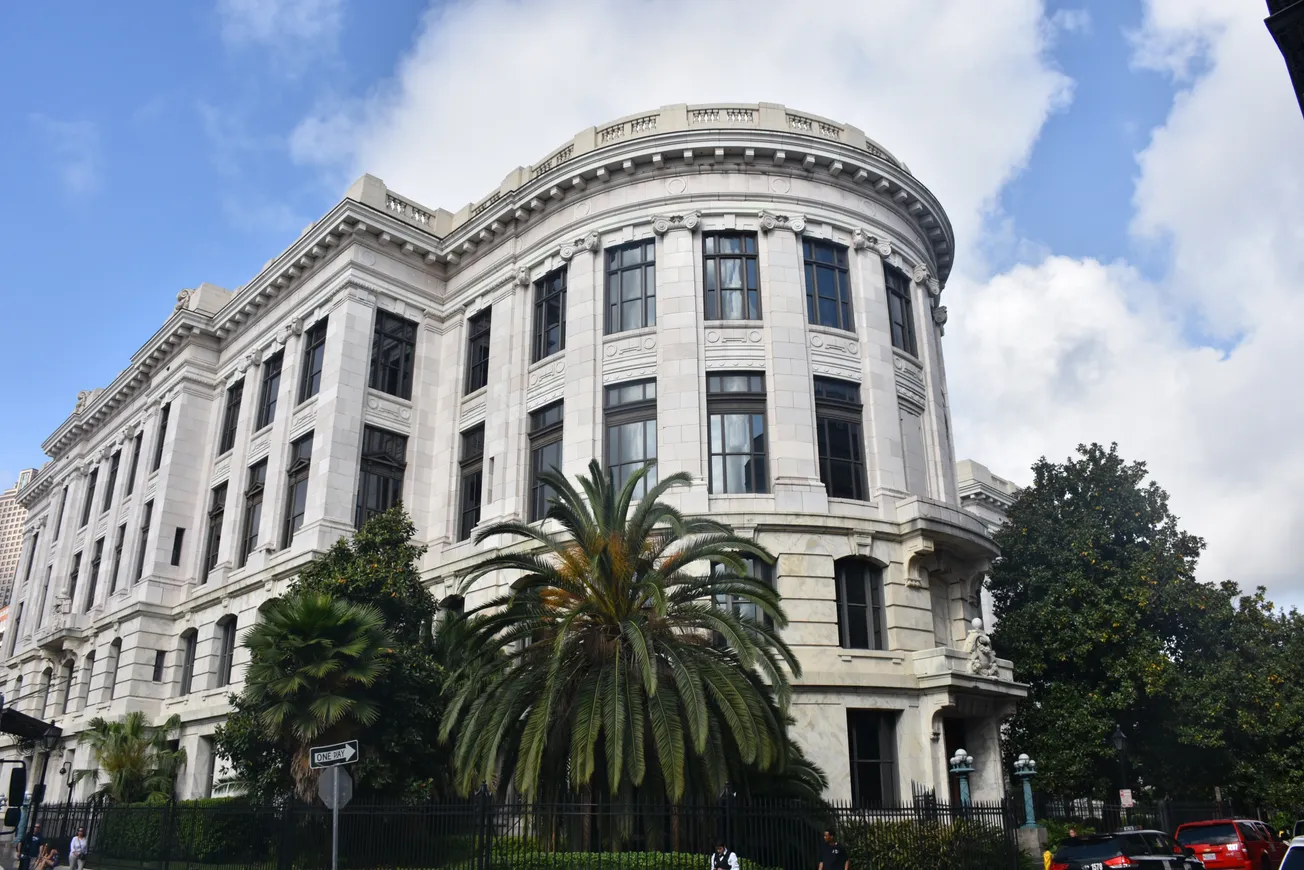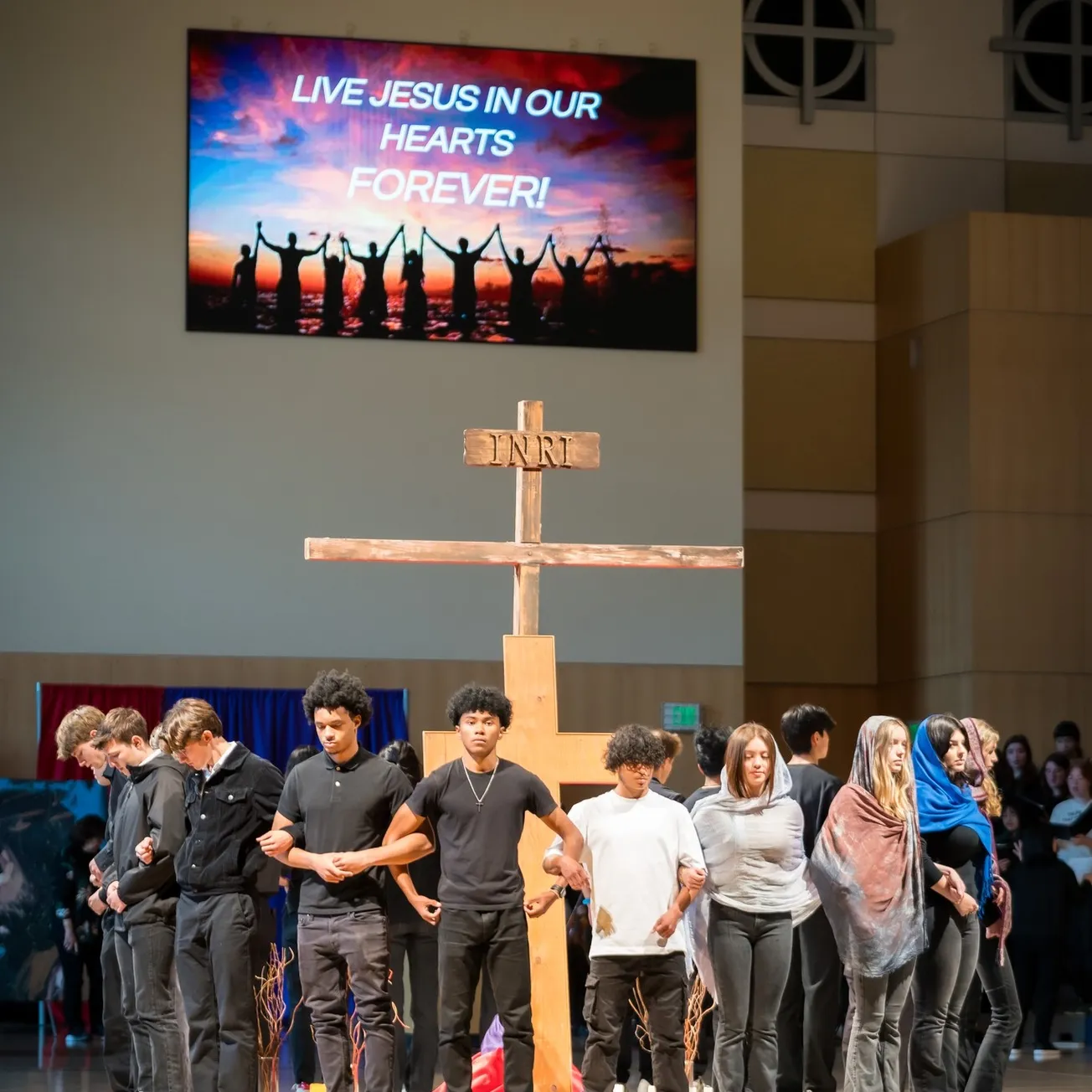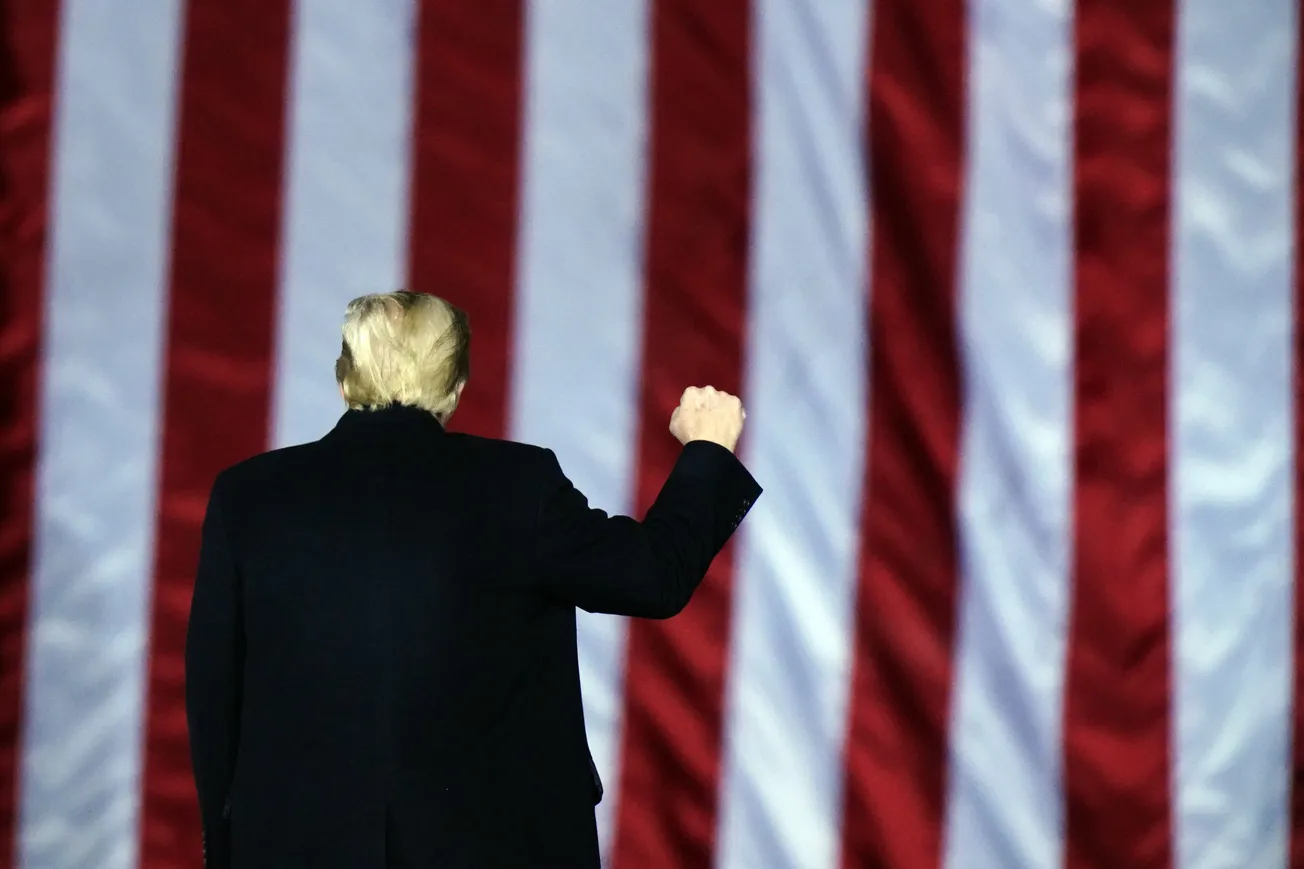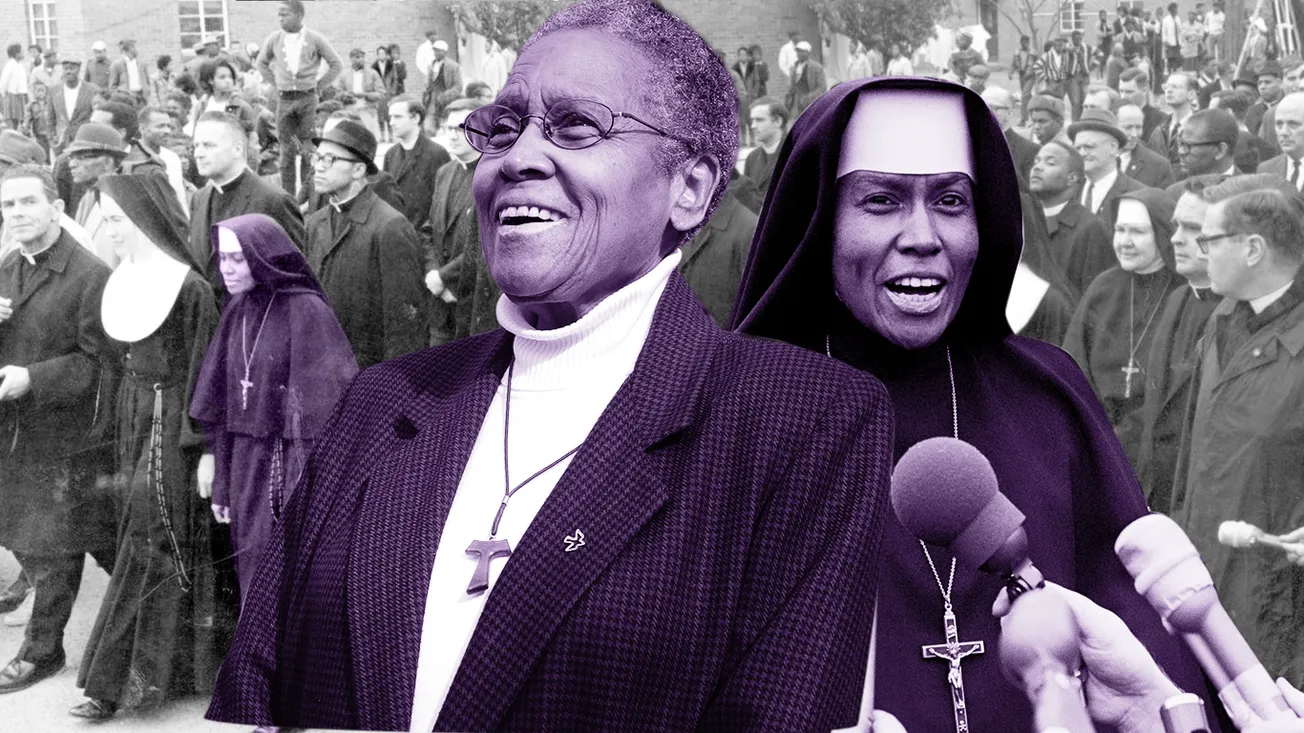LOUISVILLE, Ky. — Major sectors of Black Catholic history came full circle Wednesday afternoon in Kentucky, where Archbishop Shelton Fabre was installed in Louisville as the state’s first-ever Black Catholic prelate.
The Kentucky International Convention Center’s grand ballroom was filled nearly to the brim with onlookers from near and far, numbering in the thousands to witness history made by a 58-year-old Louisiana Creole—the first to become a metropolitan—taking over one of the oldest dioceses in the country.
Roughly 7,000 others watched online via livestream.
Among the throng of clergy present in person for the event were African-American priests from around the country, from one of the oldest, to the youngest in Fr Ajani Gibson of New Orleans. Opposite them sat Deacon Mel Tardy, president of the National Black Catholic Clergy Caucus, alongside several Black members of the permanent diaconate.
Black religious sisters and nuns joined academics, administrators, and other laypeople in a section reserved with placards for “National Black Catholic Leaders”—a welcome sight below the Mason-Dixon line.
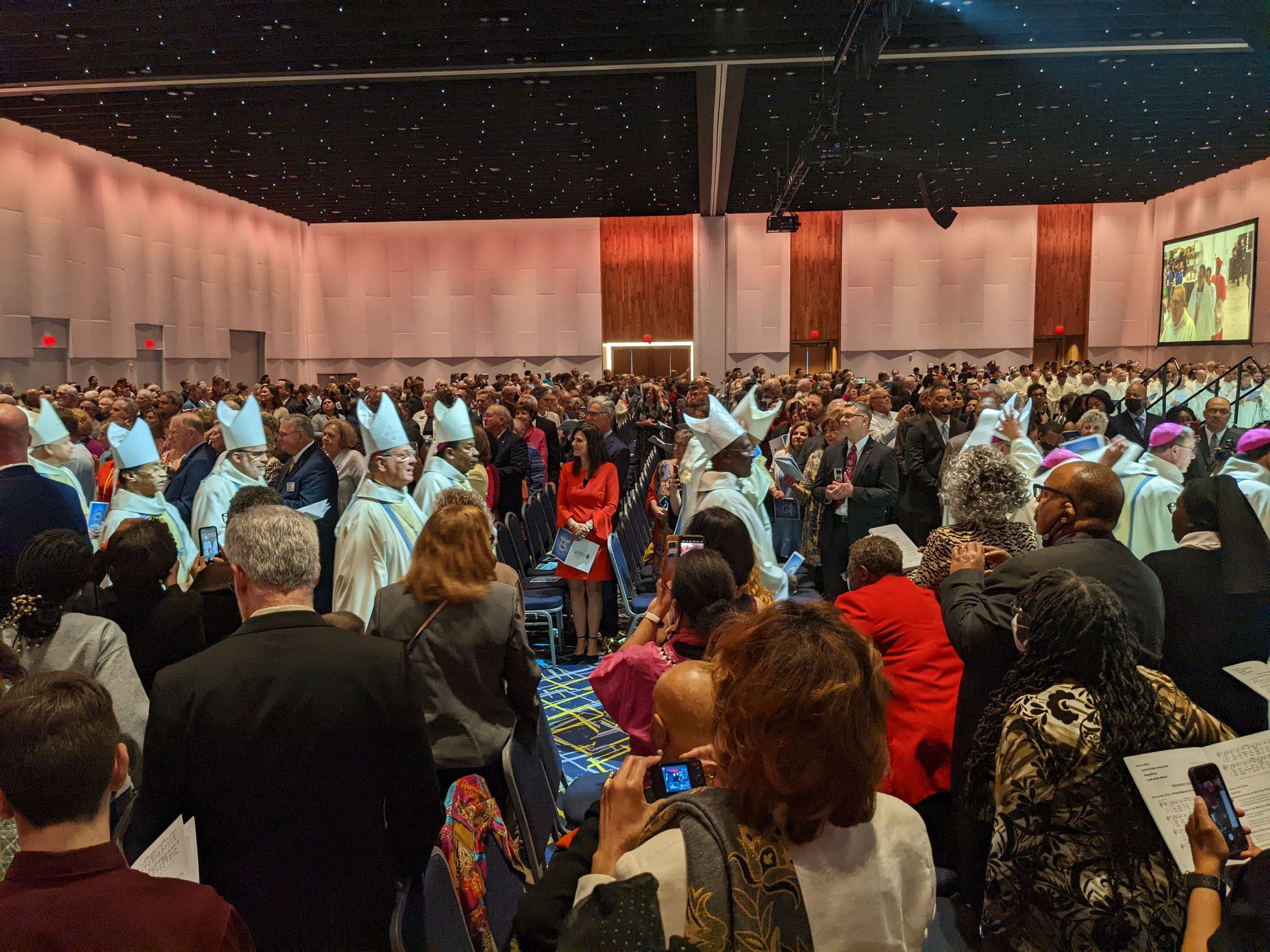
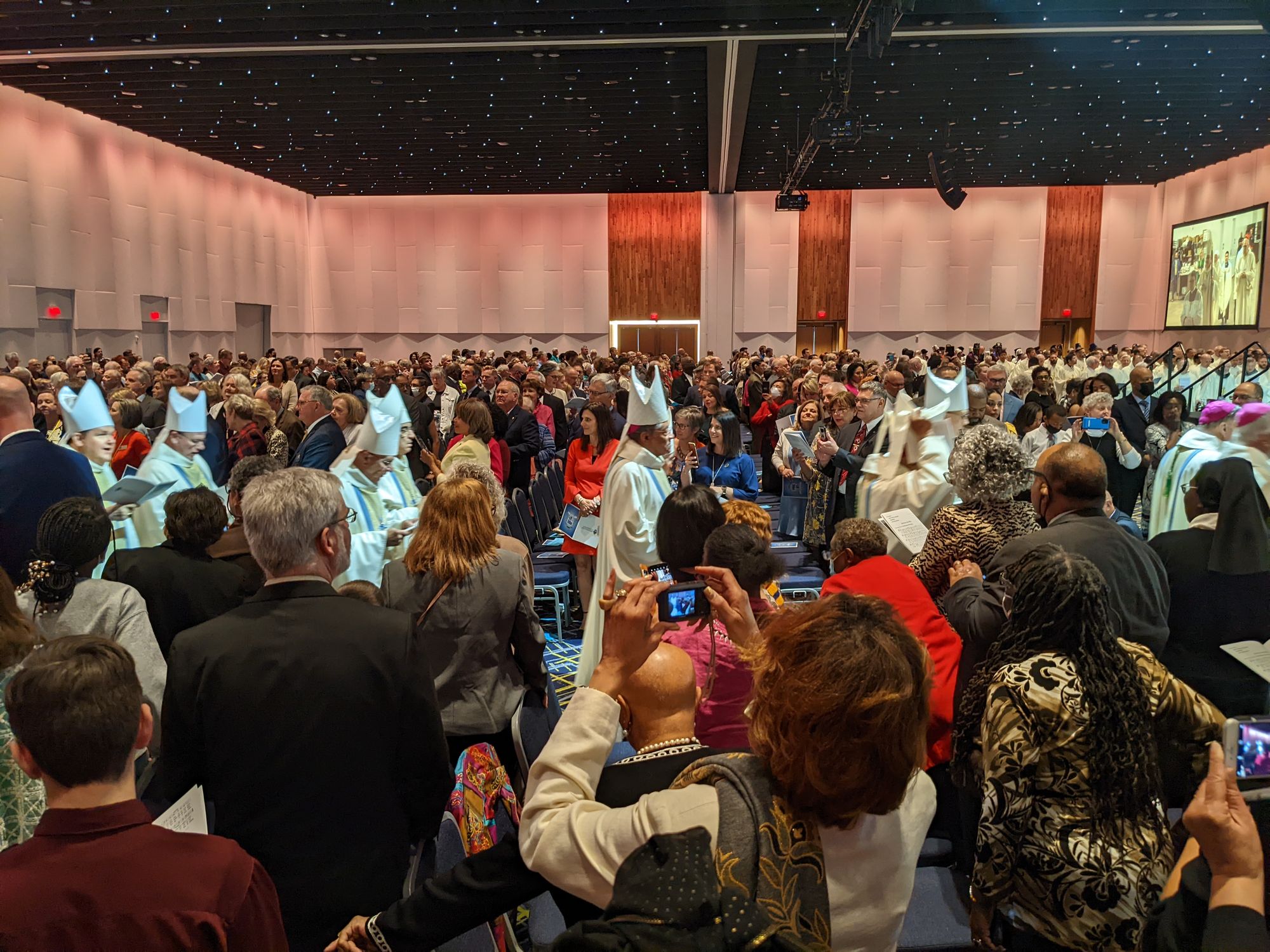
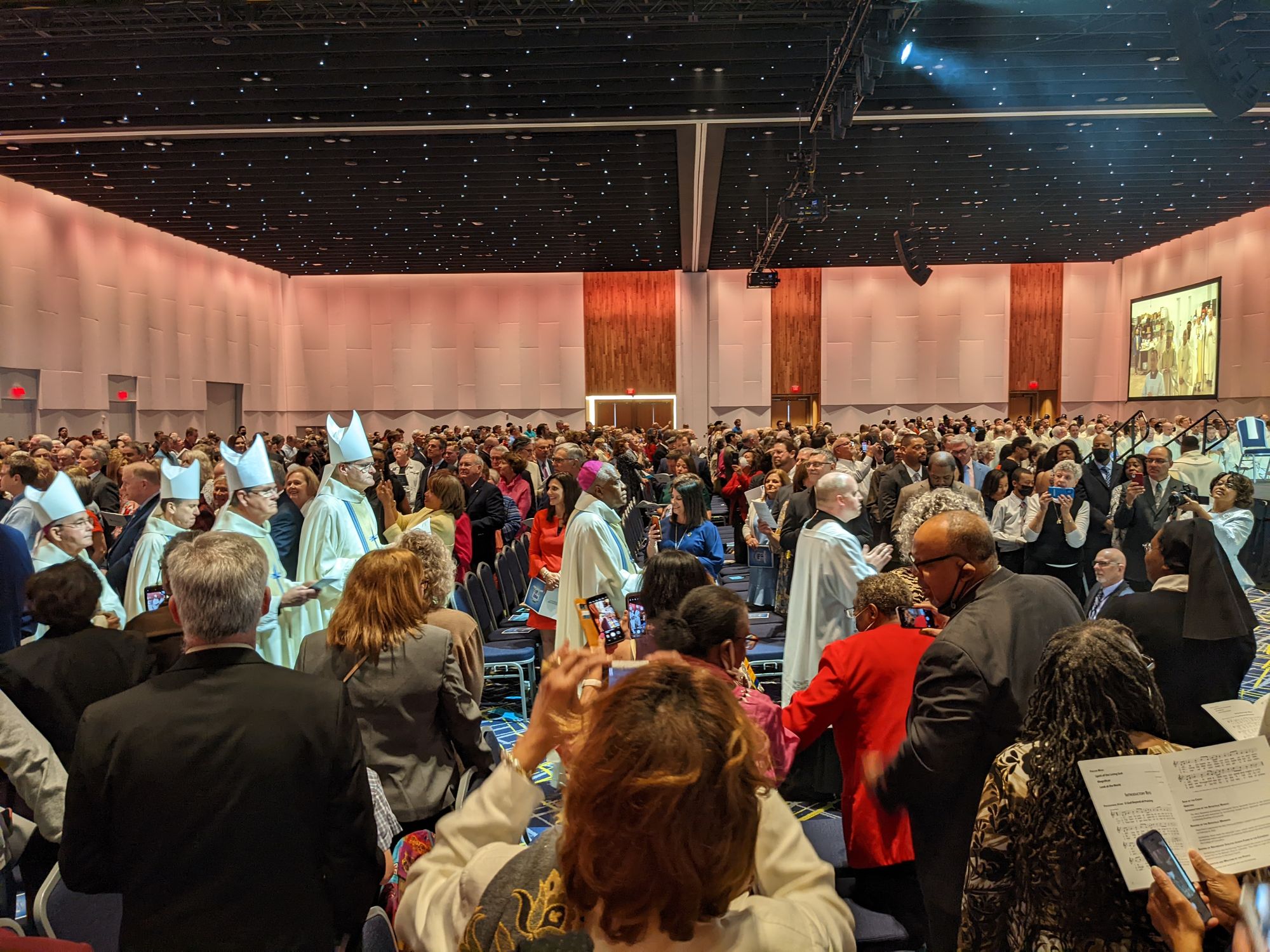
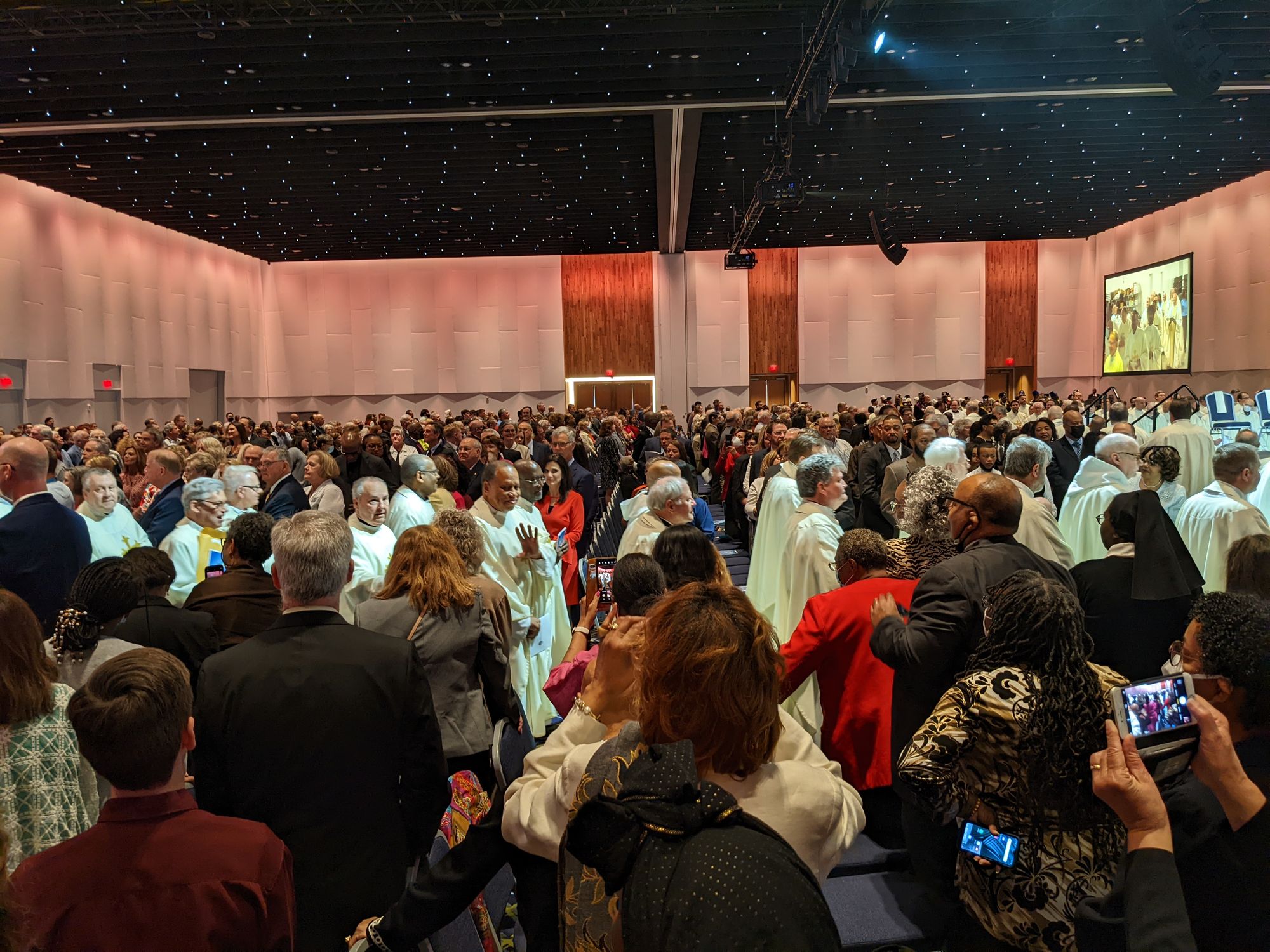
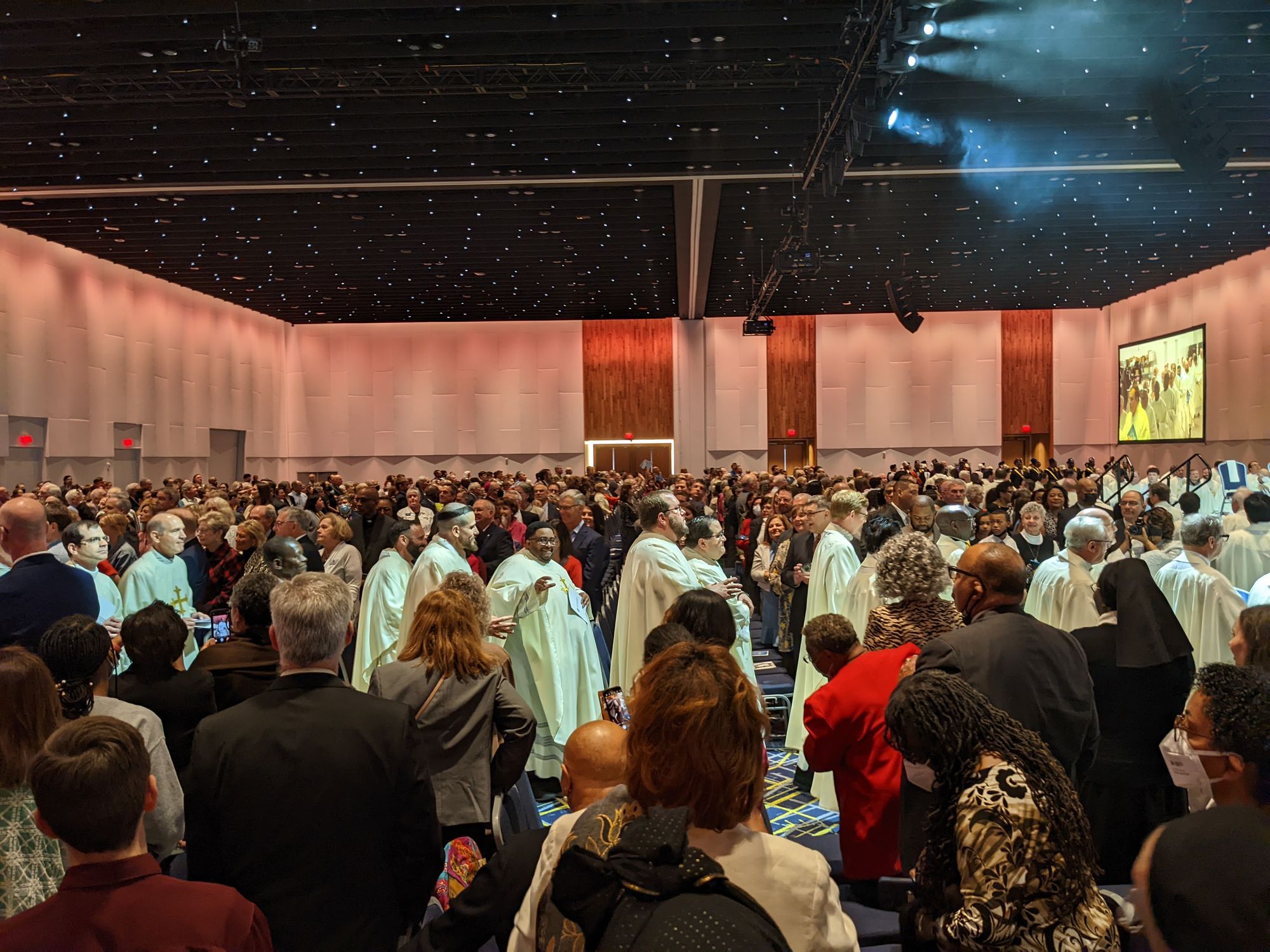
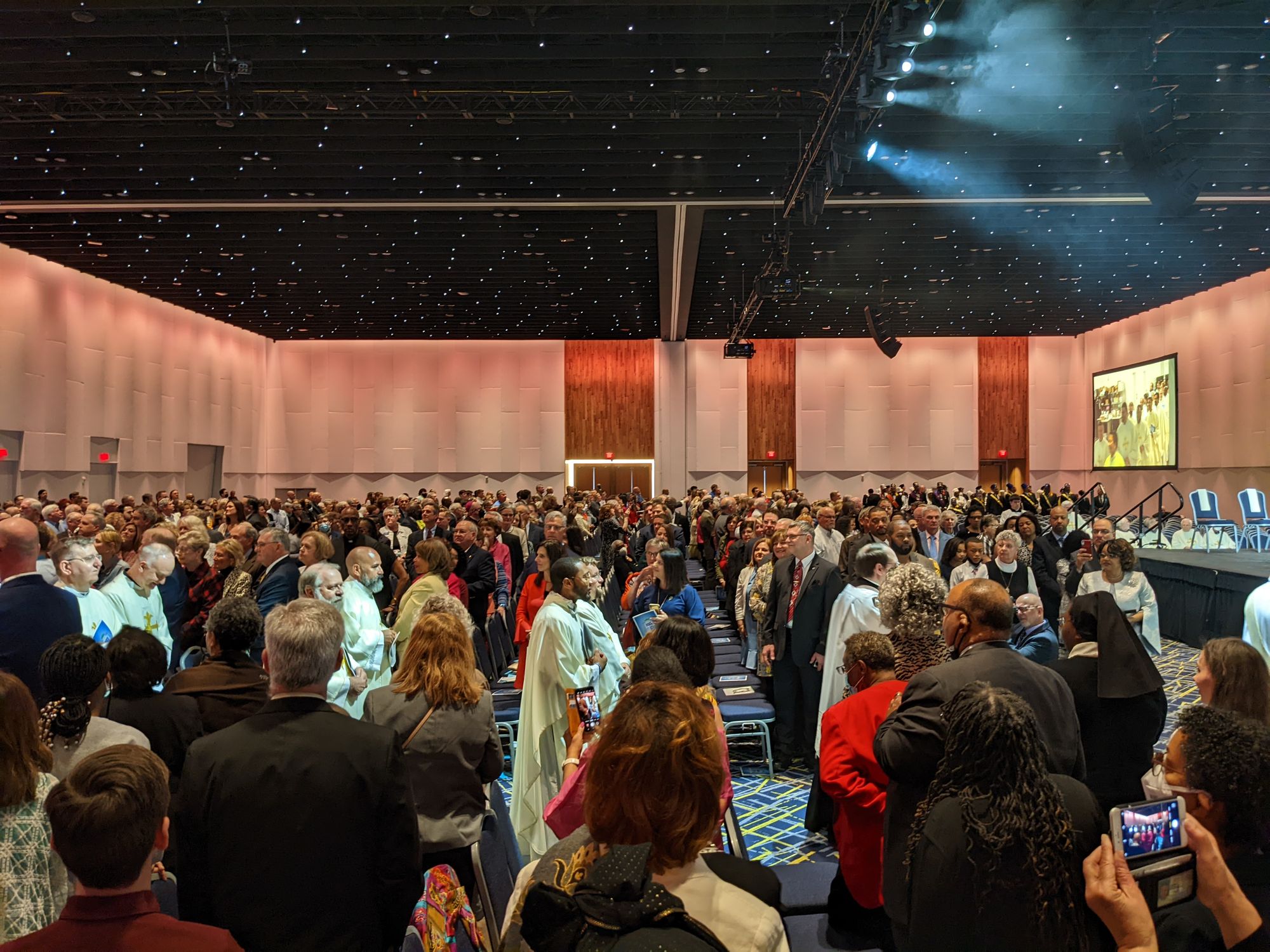
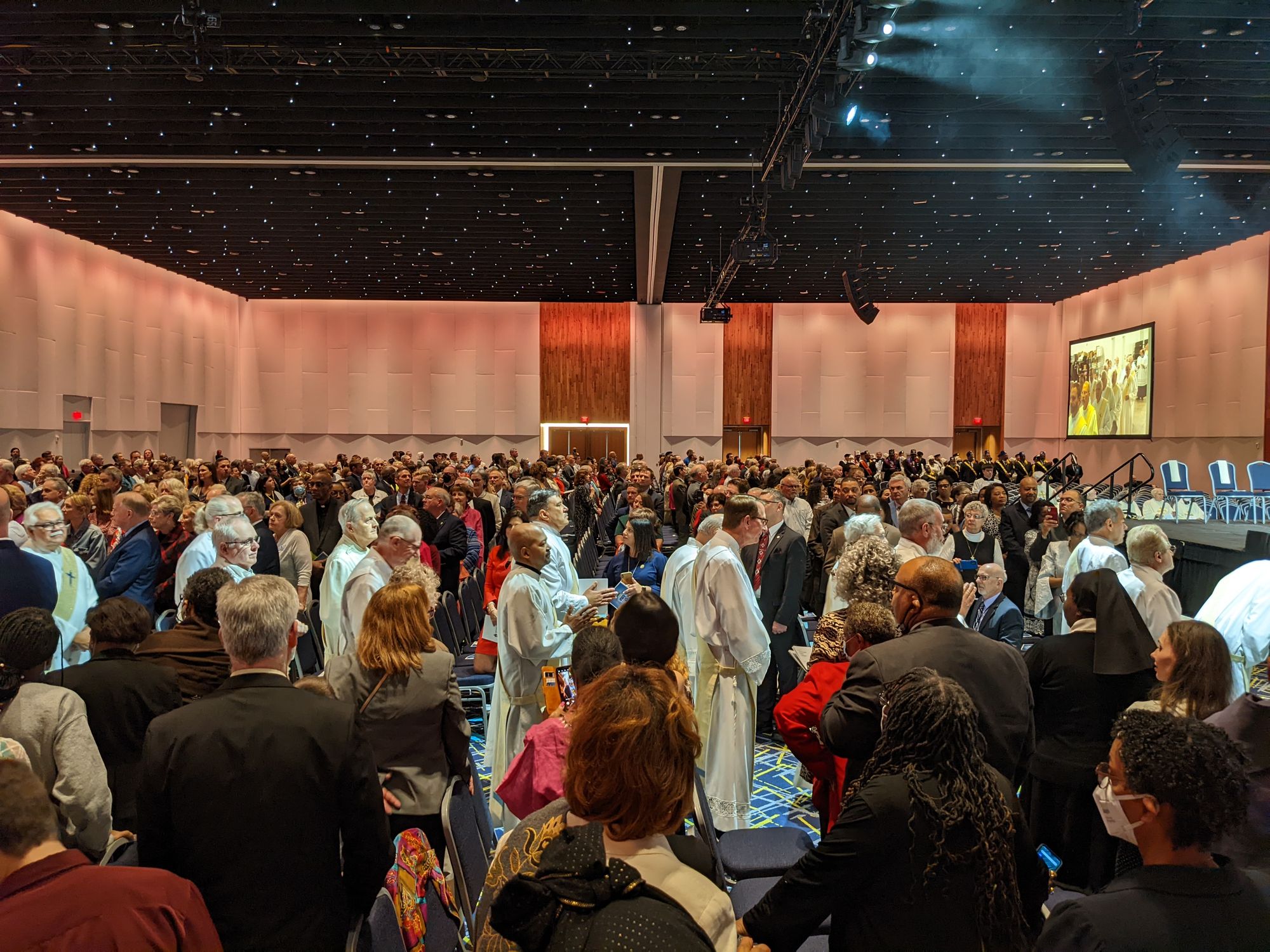
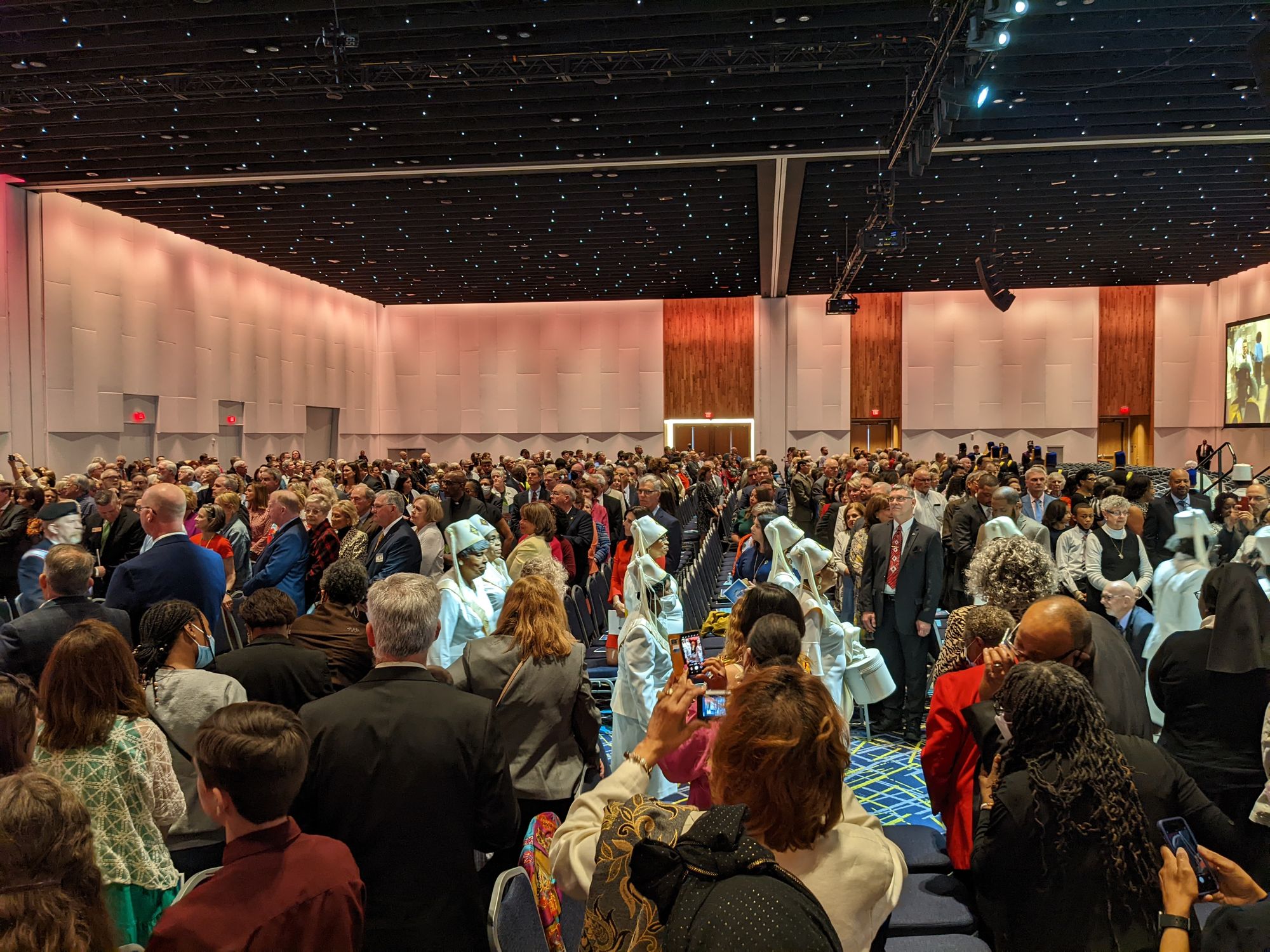
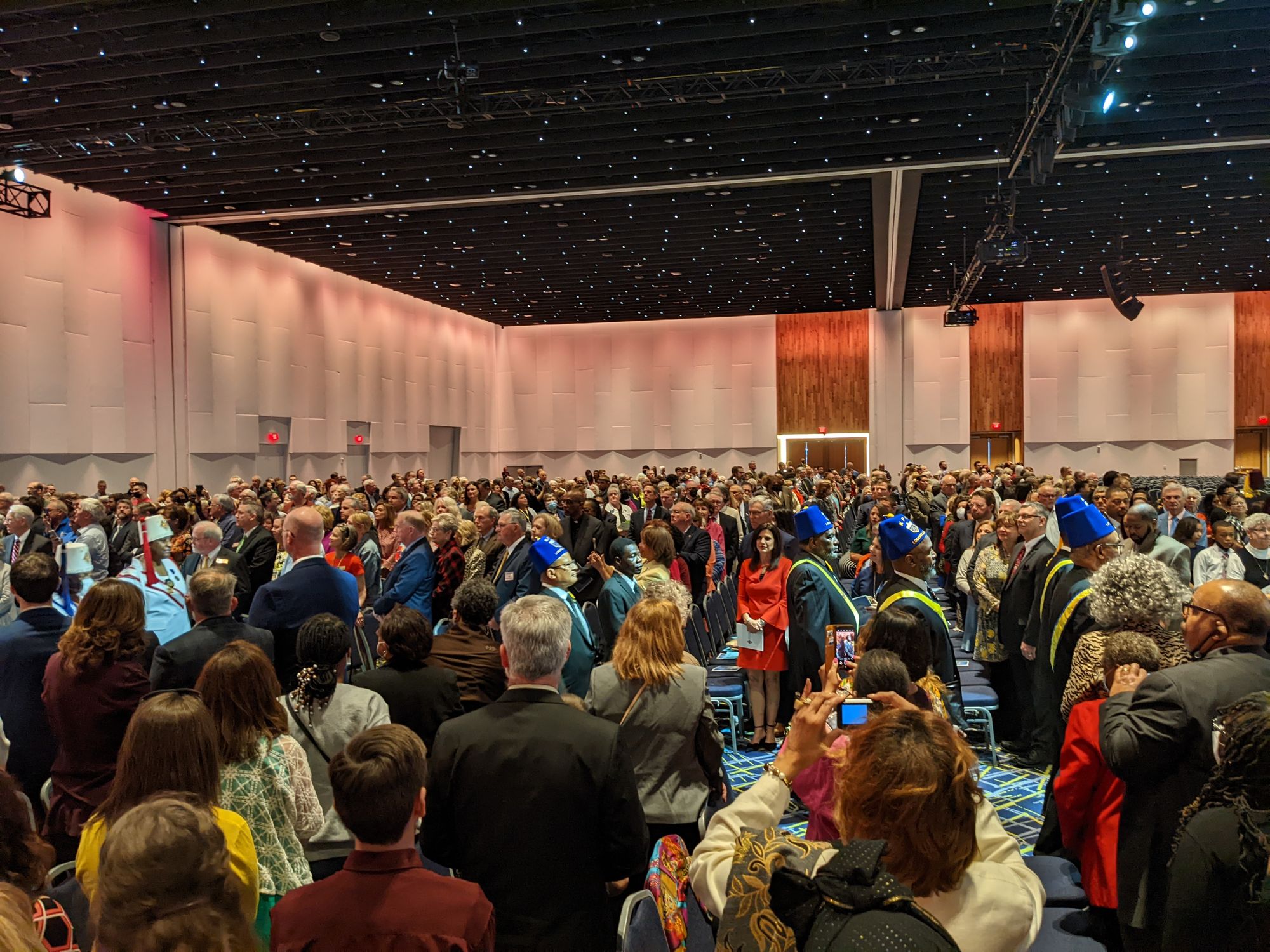
Following a procession led by the Knights of Peter Claver and Ladies Auxiliary, the altar hosted a cross-section of the nation’s episcopal leaders, active and retired. These included more than a half-dozen Black bishops—including one prelate-to-be, Bishop-elect Jacques Fabre, due to be installed in Charleston in May.
The twin surnames reflect the French heritage so inextricably linked to Black Catholicism in North America—a point not lost on Archbishop Christophe Pierre, the French-born US apostolic nuncio present at the Mass on behalf of Pope Francis to formalize Fabre’s appointment.
“You have distinguished yourself as a priest in Baton Rouge—Bâton Rouge, auxiliary bishop of New Orleans—New Orléans, and as bishop of the Diocese of Houma-Thibodaux. My God!” Pierre noted playfully during his remarks, garnering applause from the crowd.
“How did you make so many good names like that?”
Indeed, Louisville itself is named for none other than King Louis XVI of France—ironically so, as his repeal of religious freedom occasioned the departure of French Protestants for America, and eventually Kentucky. A century later, in 1785, the first Catholics arrived in Bardstown, just 40 miles from Louisville and the former seat of the diocese.
It is one of the oldest sees in America, founded in 1808 with a substantial number of Black Catholics, though mostly those enslaved by settlers, priests, and various orders of nuns. It was there, and in this condition, that the venerable Black Catholic journalist and activist Daniel Rudd was born in 1854.
It was another 120 years after Rudd’s birth before the first Black Catholic priest was ordained in the Archdiocese of Louisville: the now-retired Msgr Edward Branch, best known for his extensive work in Atlanta.
He was first called to serve there in 1990 by the nation's first Black archbishop, the Josephites' Eugene Marino, SSJ. Branch has remained there since, spanning the tenure of the second and third African-American archbishops as well, both of whom became so in Atlanta: the late James Lyke, OFM and Wilton Gregory (now the Cardinal-Archbishop of Washington).
It was only right then that Branch himself, now in his late 70s, made his way home to see Fabre installed—wheelchair and all.
History was in many ways a matter of sitting on that day. As is the Catholic custom, the installation Mass began with the sitting archbishop, Joseph Kurtz, enthroned in the cathedra, the bishop’s chair. Across the altar sat Fabre and his attendees, as well as Gregory—the first African-American cardinal.
Pierre, representing the bridge between the past and the future that is Pope Francis, was the agent to administer the changing of the guard, assisting Kurtz to present the crosier to Fabre, who was thereafter enthroned in a new cathedra for the second time in his career, but this time all the more historic.
“Just as you brought healing to the people of Louisiana after Hurricane Ida, so now you must live here your episcopal motto to ‘comfort God’s people’,” Pierre told him just minutes prior.
Though the history of the moment could not be denied, Fabre—exhibiting his characteristic humility—deflected praise.
“Today is not about me. It's about our Lord Jesus Christ, the eternal high priest,” he proclaimed during his homily, focusing on the body of Christ in both the Eucharist and the multifaceted crowd assembled to fete him.
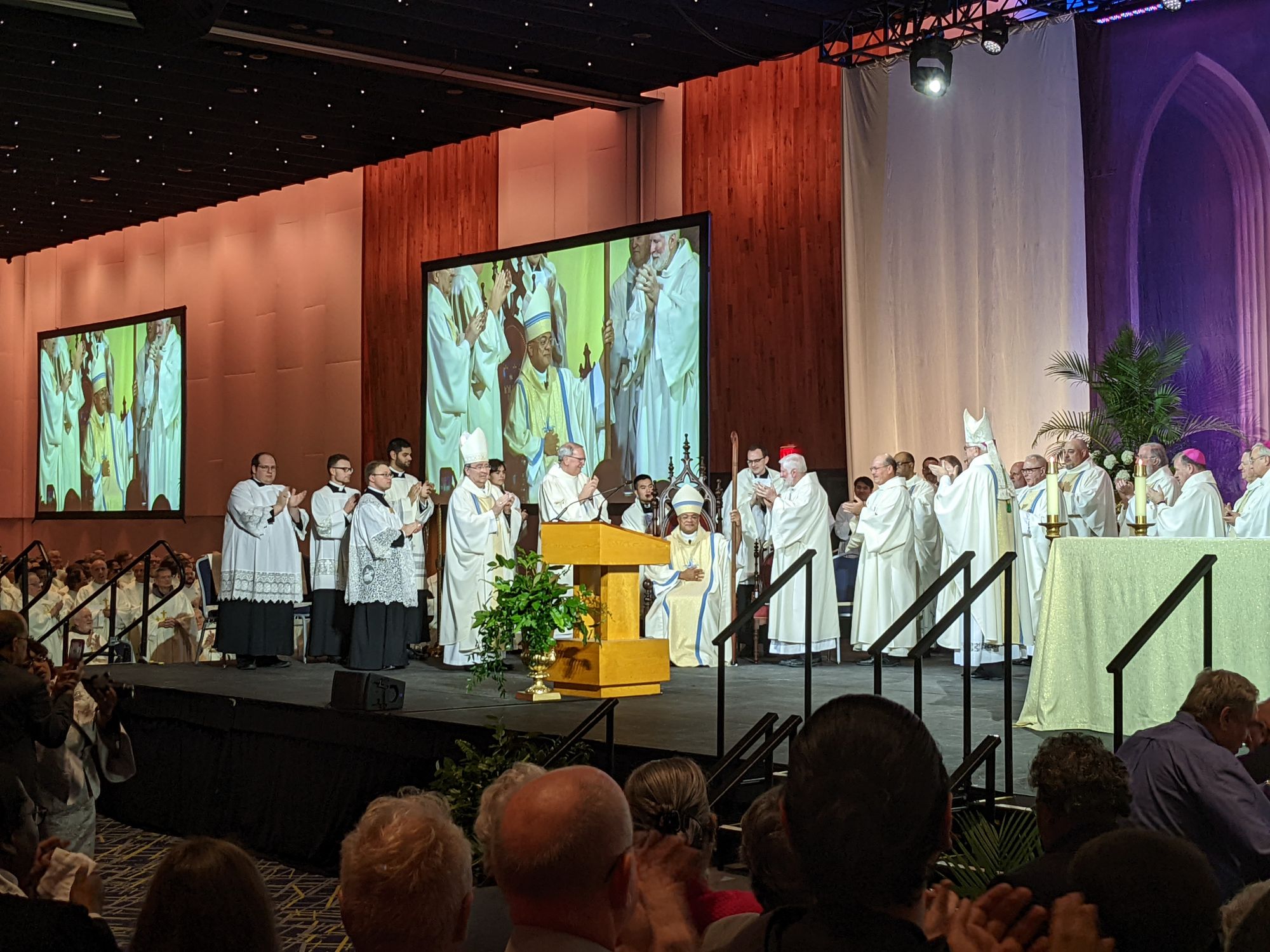
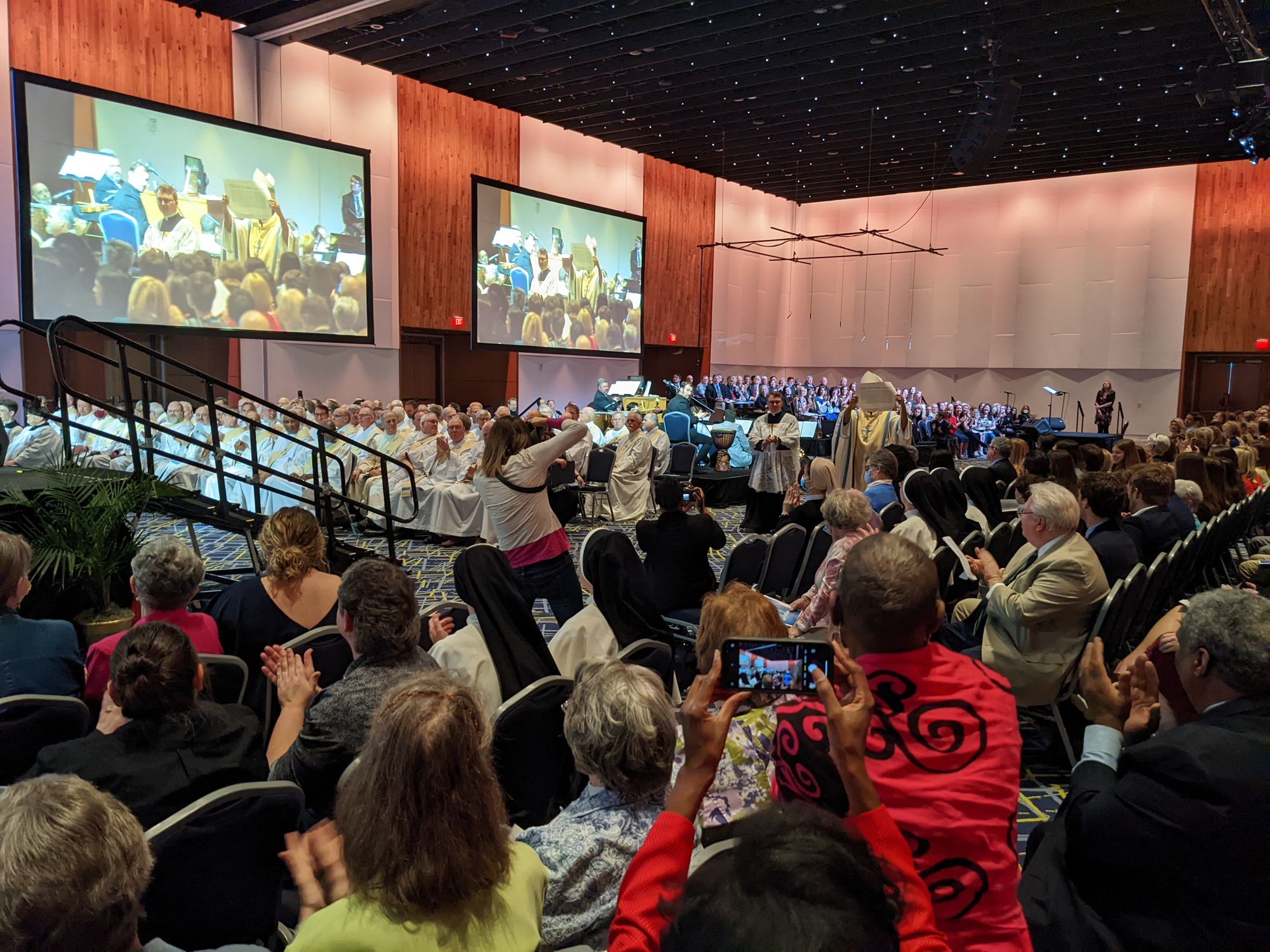
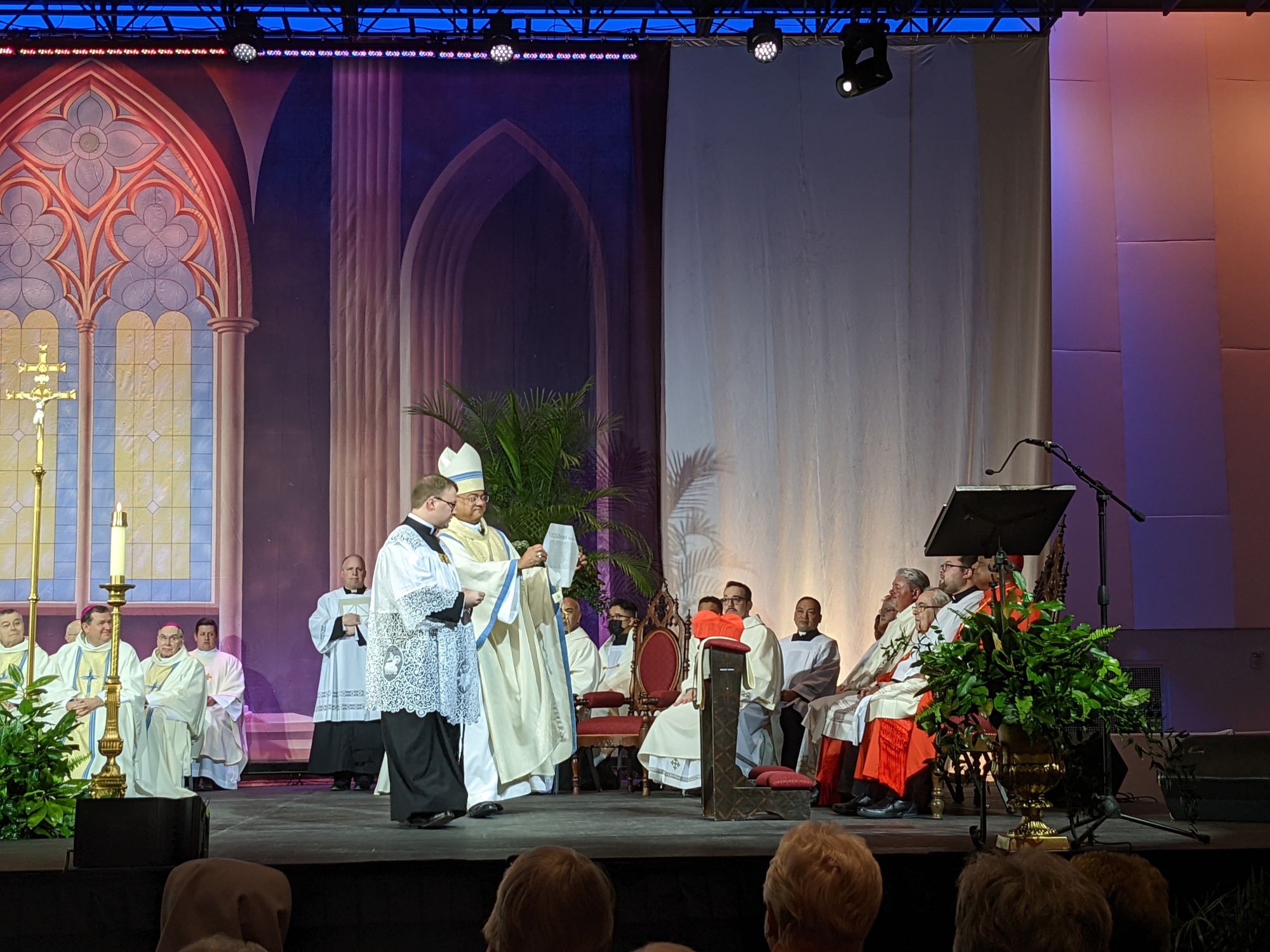
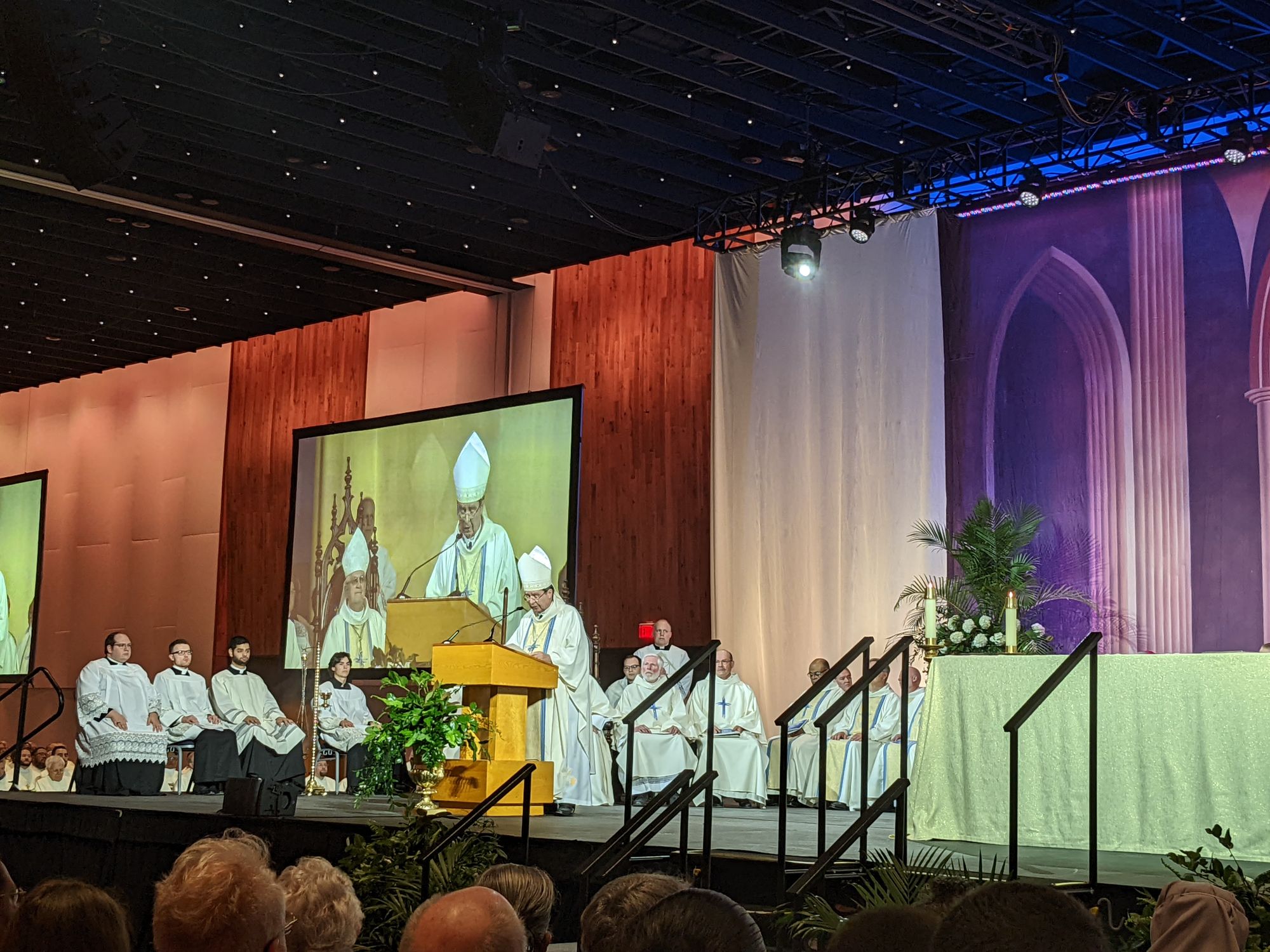
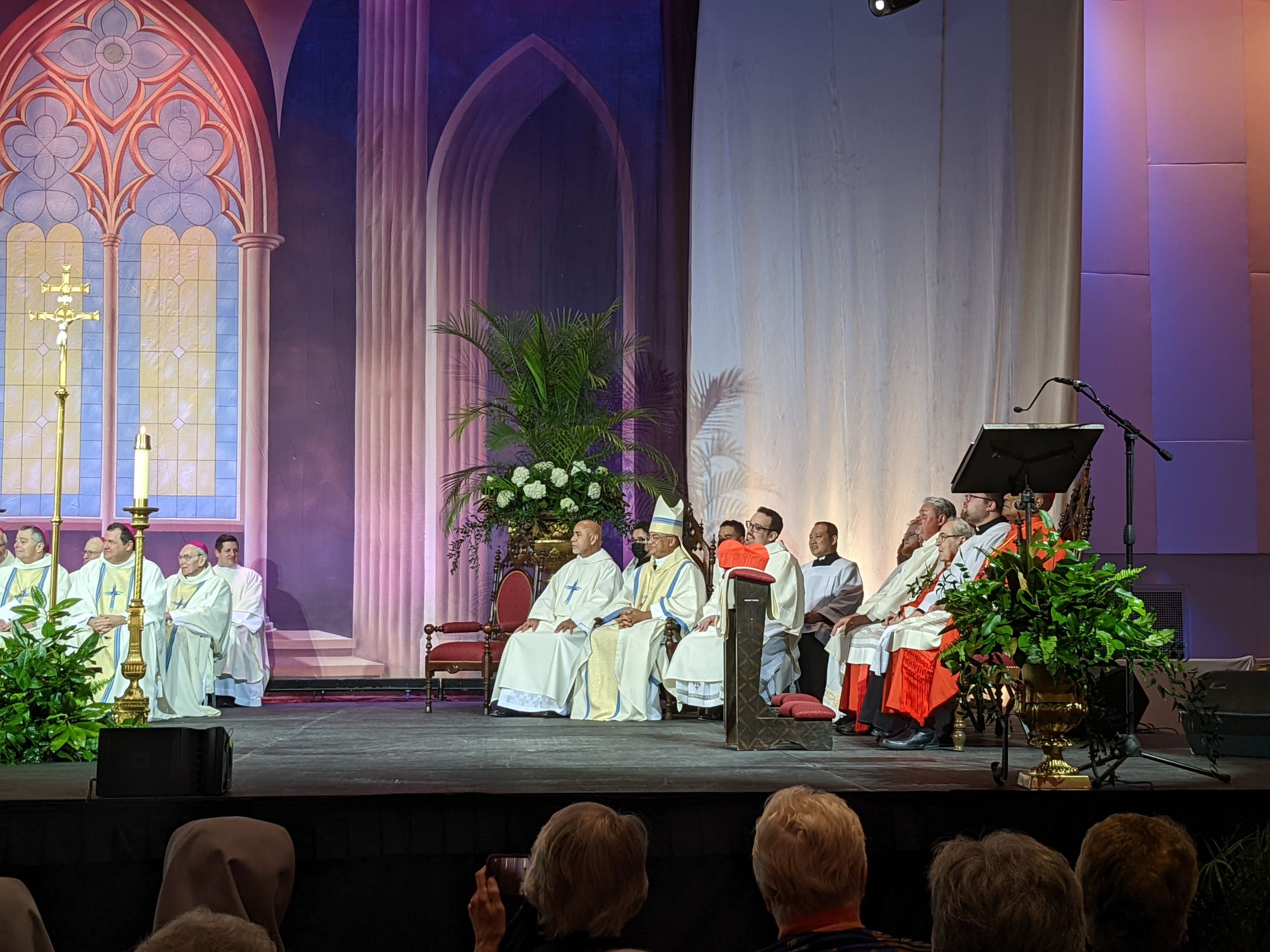
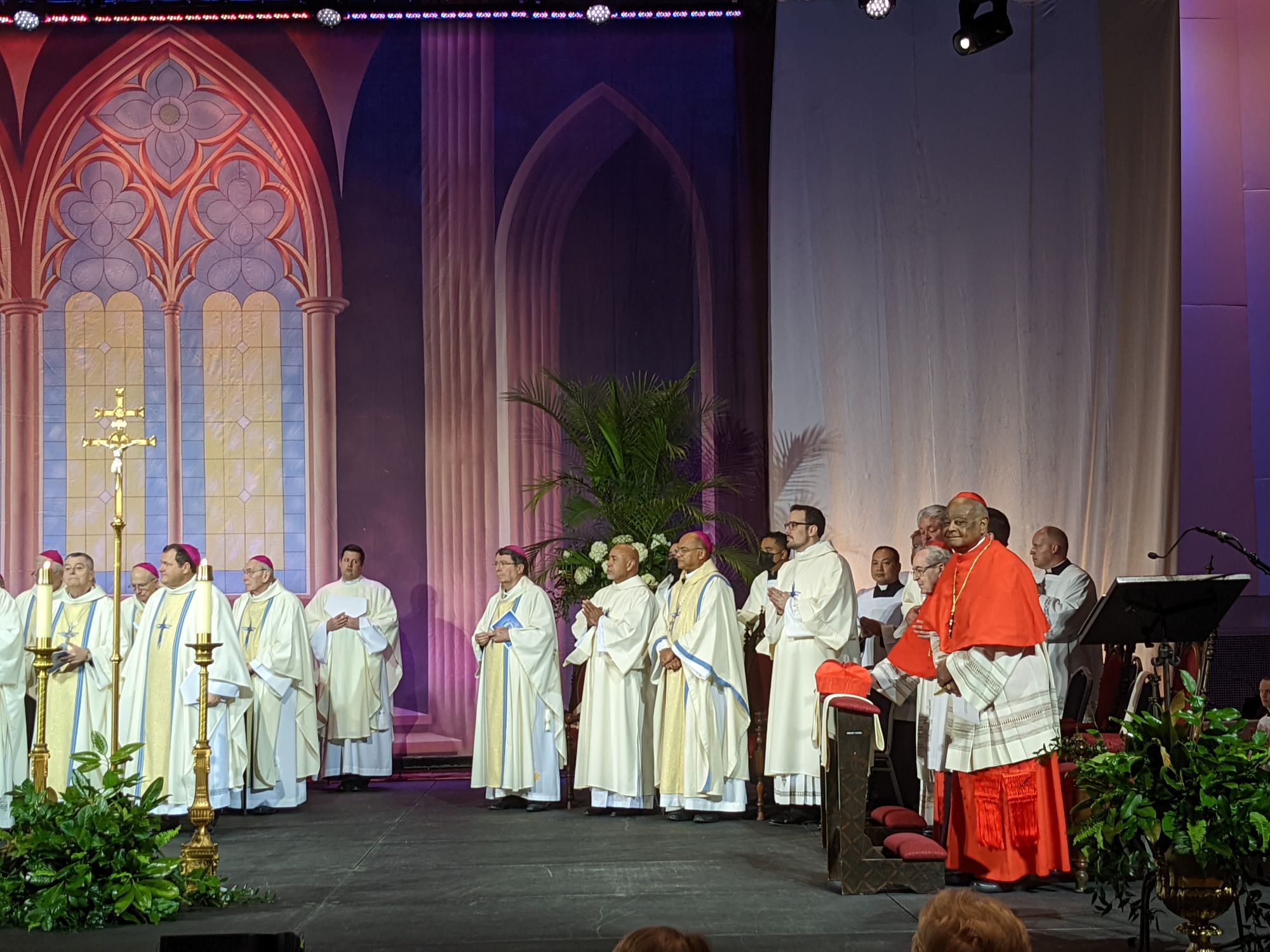
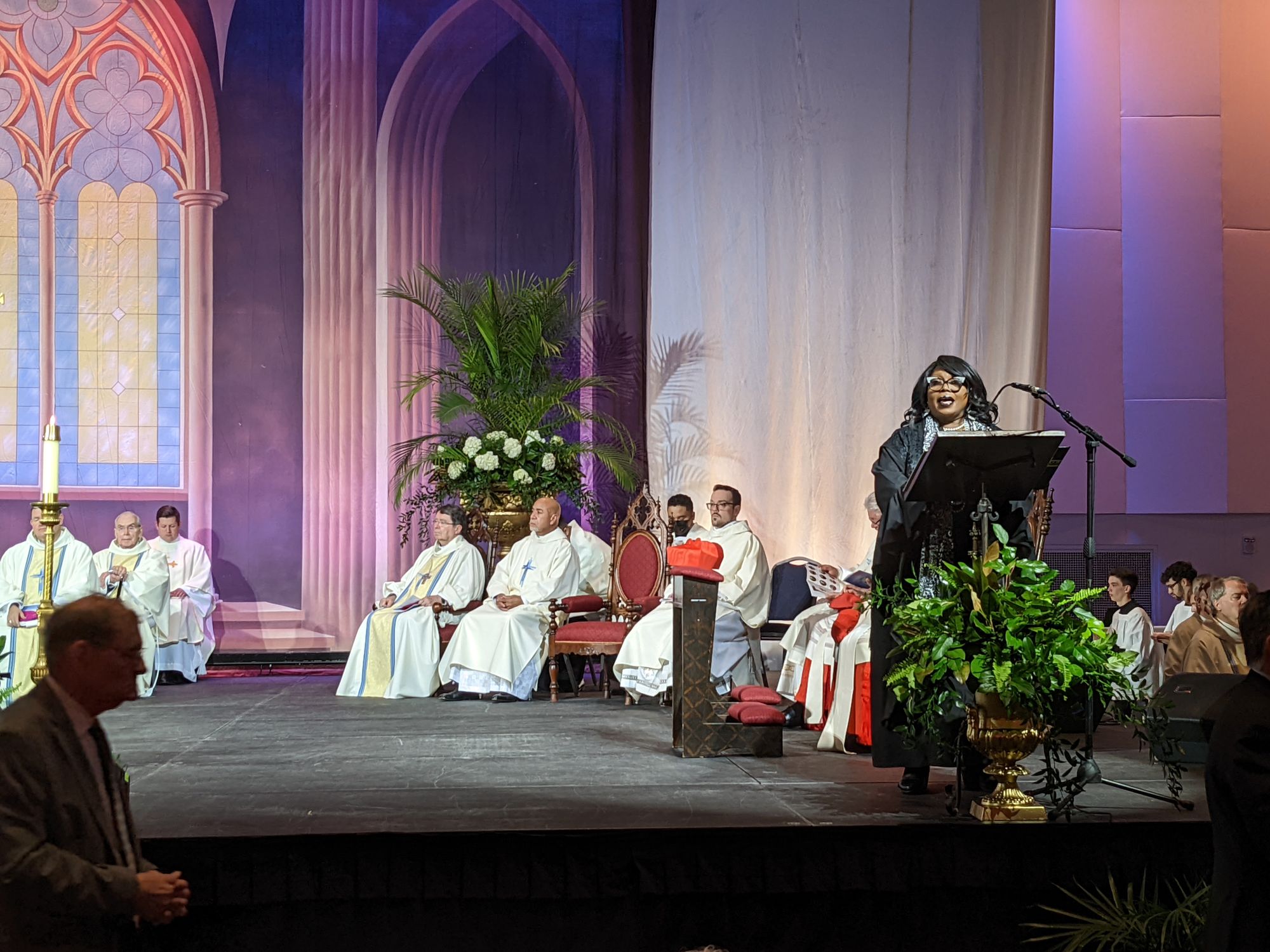
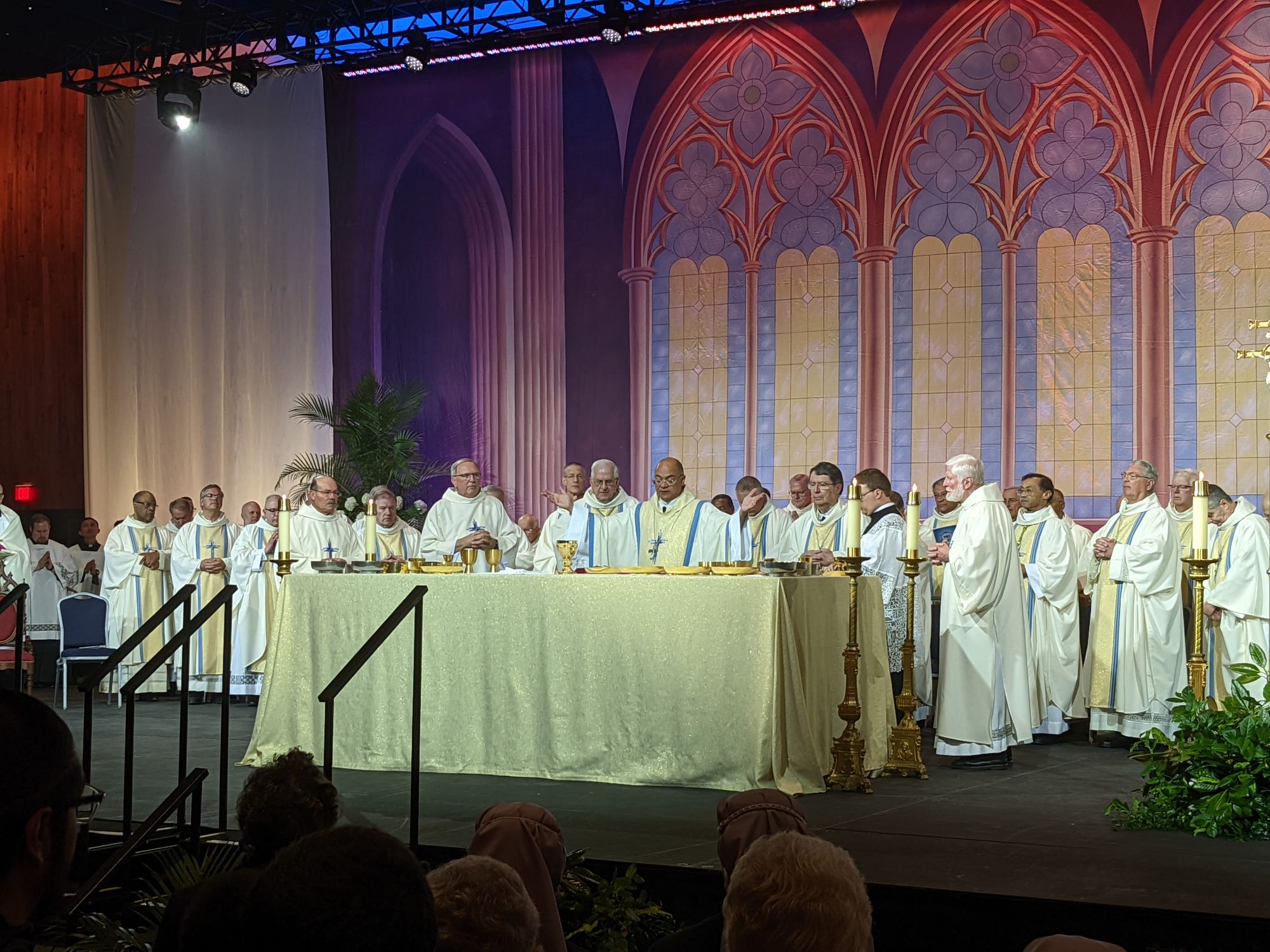
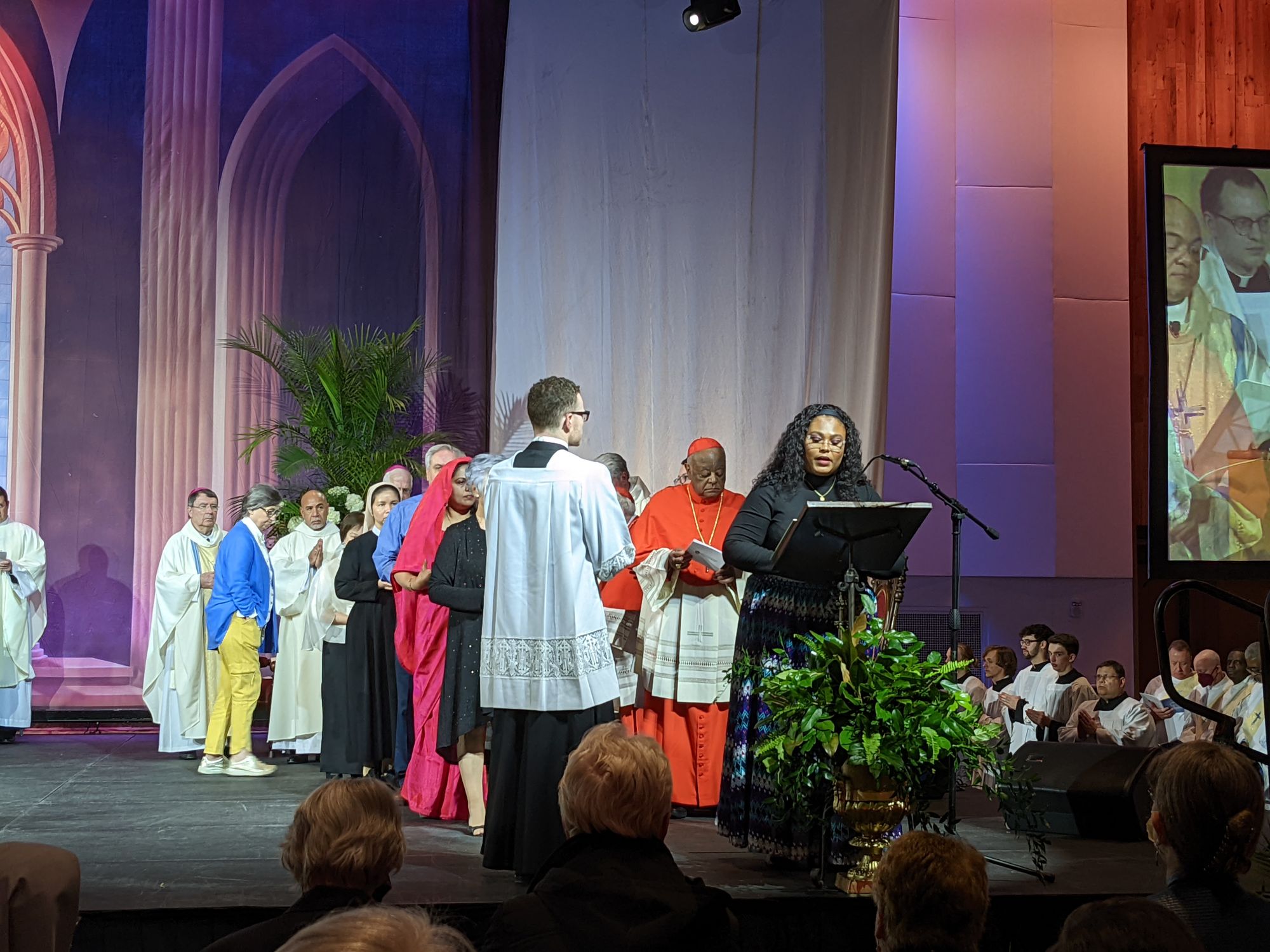
Fabre encouraged unity among his new flock, and noted that various “challenges” lay ahead of them in the days to come. Coronavirus was among them, as was the recent (and extended) history of Louisville.
The very downtown neighborhood in which the ceremony took place was, until recently, boarded up in the long wake of protests regarding the murder of Breonna Taylor and other African Americans locally and elsewhere.
“It was like a ghost town,” one resident related.
Fabre himself noted “injustice and racism” specifically as one of the issues he will be tasked with confronting in his new post, but emphasized that it is not a job for him to do alone.
“We are in this together,” he told the assembled faithful.
The Mass itself represented the archdiocese’s many cultures, reflecting the changing outlook of ministry and evangelization in post-postmodern America. Like a cathedral event in New York, the prayers of the faithful were each read in a different language. Like a concert in Europe, a massive choir joined a classical vocalist for most parts of the Mass. Like a Gospel Mass in Louisiana, dual meditation hymns were led in Black patrimony by New Orleans’ own Veronica Downs-Dorsey.
First Gospel songs of the Mass, both composed by Black Catholic liturgist Rawn Harbor. Sung by New Orleans' Veronica Downs-Dorsey.
— Nate Tinner-Williams 🇻🇦✊🏾🌹 (@natemup) March 30, 2022
Livestream: https://t.co/znnU9gZx0N pic.twitter.com/v4D9LgHAqT
The exuberance of the moment ran especially high during the Downs-Dorsey's virtuosic melodies—with several onlookers standing to sway, clap, and sing—but strong emotions were also present for some throughout.
In that category was Sr Mary Francis Bard, SSF, one of two Sisters of the Holy Family present for the occasion, hailing from the region and currently stationed there while on sabbatical. She spoke of the generations of Black Catholics in northern Kentucky who likely never could have dreamed that one of their own would one day lead the local flock.
“I just started crying,” Bard said after the Mass.
Reflecting on the Gospel reading from Luke 5, which details the call of Peter and the apostles to become “fishers of men”, Fabre deftly summarized his historic priestly journey and the day’s significance in one fell swoop.
“I know what Peter knew. I trust Jesus,” he said.
“The call is about a person, the person of Jesus Christ, and not merely about the destination.”
Nate Tinner-Williams is co-founder and editor of Black Catholic Messenger, a seminarian with the Josephites, and a ThM student with the Institute for Black Catholic Studies at Xavier University of Louisiana (XULA).


